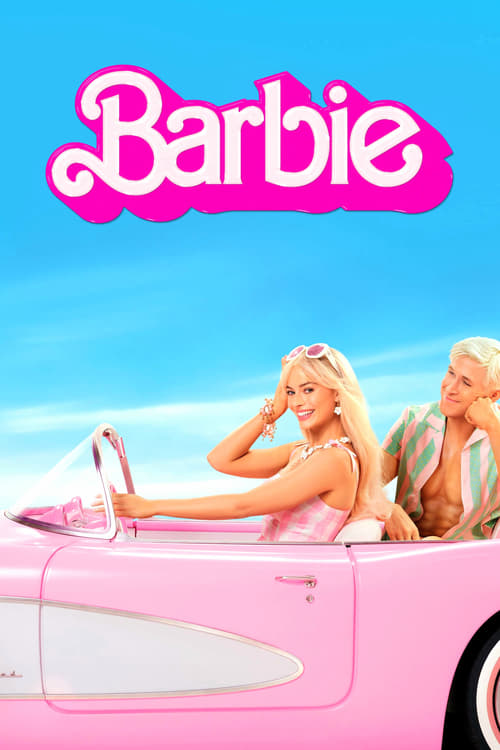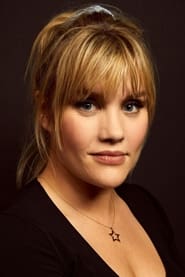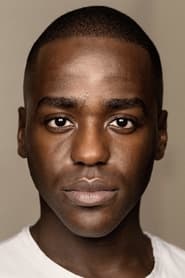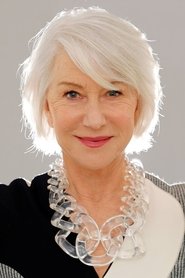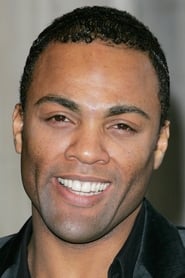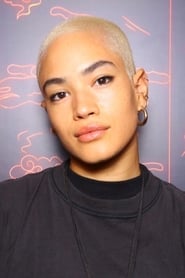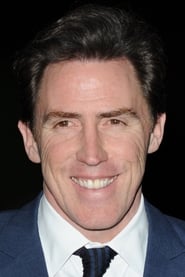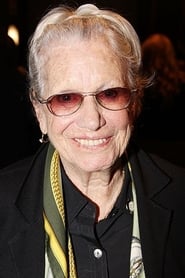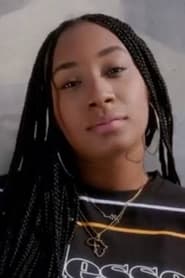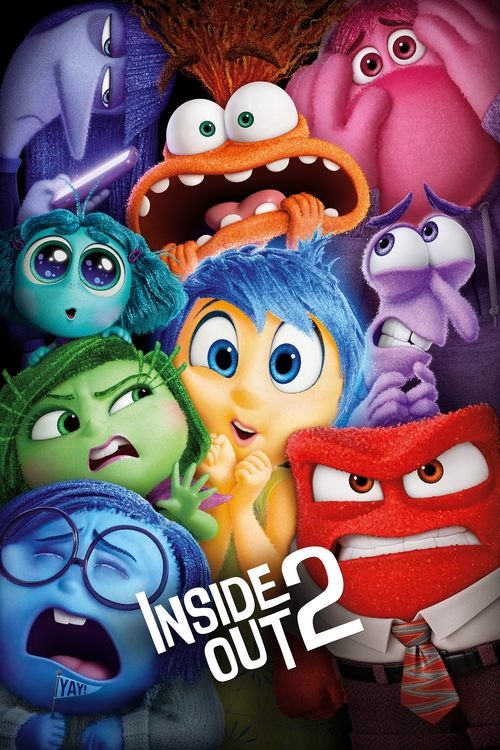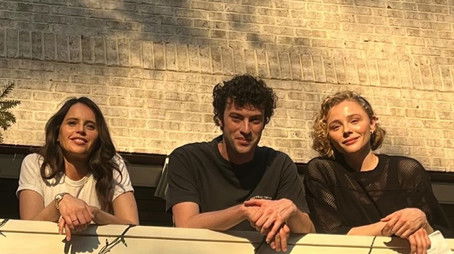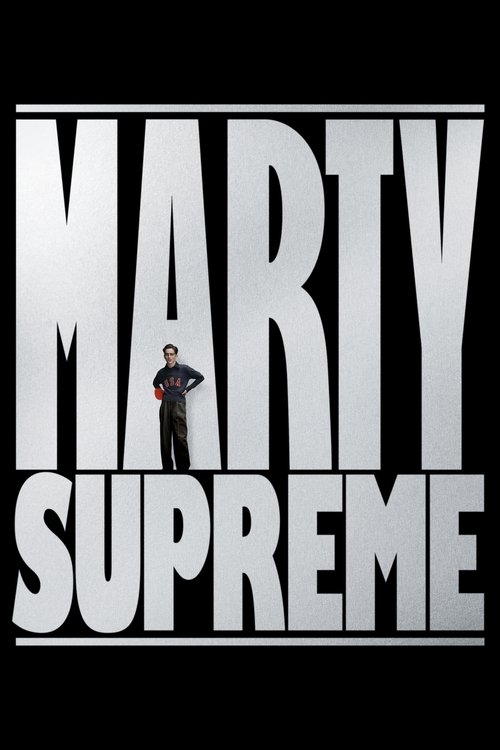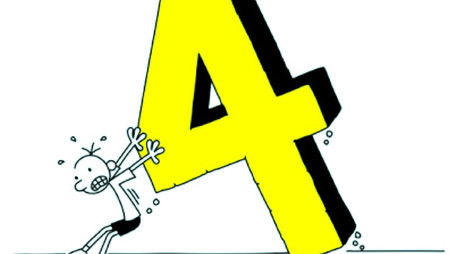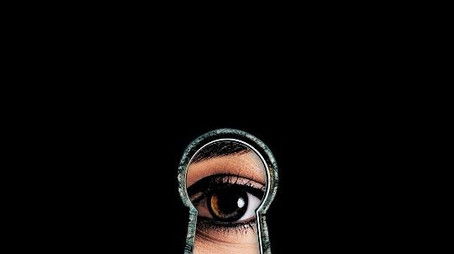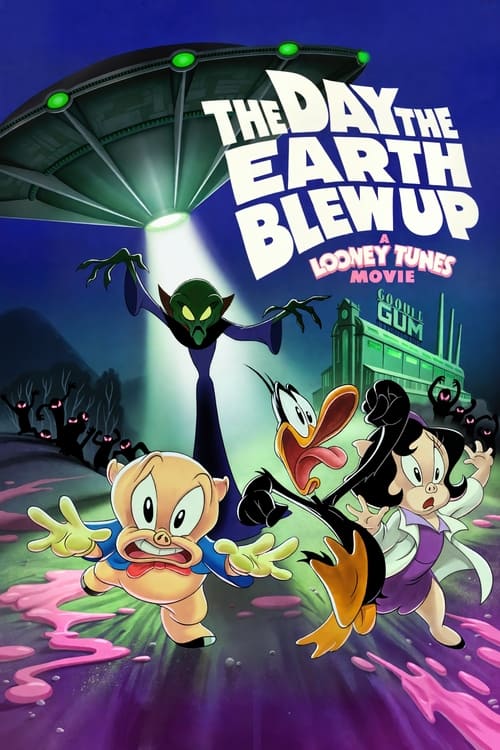
Ask Your Own Question
What is the plot?
The film opens with a nostalgic narration by Helen Mirren, who reflects on the cultural impact of the Barbie doll since its inception in 1959. The scene shows young girls rejecting their traditional baby dolls in favor of the new, glamorous Barbie, setting the stage for a story about identity and societal roles.
In the vibrant, fantastical realm of Barbieland, a matriarchal utopia, countless Barbies live fulfilling lives as doctors, presidents, scientists, and artists, while the Kens exist mostly as secondary figures, dependent on their relationships with the Barbies. Among them, the main Barbie--referred to as Stereotypical Barbie (Margot Robbie)--enjoys a seemingly perfect existence, with her devoted Beach Ken (Ryan Gosling) persistently vying for her attention, though she often rebuffs him in favor of her female friends and career pursuits.
During a lively dance party celebrating the joy of Barbieland, Barbie suddenly experiences a disturbing thought about mortality, which unsettles the carefree atmosphere. Overnight, she begins to suffer from physical imperfections unheard of in Barbieland: her feet flatten, her skin develops cellulite, and she even experiences bad breath. These anomalies shatter the flawless image she and the other Barbies have always maintained. Concerned, Barbie consults Weird Barbie (Kate McKinnon), a disfigured and eccentric doll who lives on the fringes of Barbieland society. Weird Barbie reveals that Barbie's crisis stems from the unhappiness of the human girl who plays with her, and advises Barbie to journey into the real world to find this girl and help her.
Barbie sets off for the real world, but unbeknownst to her, Beach Ken stows away in her convertible, determined to accompany her. Upon arriving in Venice Beach, California, Barbie and Ken encounter the chaotic and imperfect nature of human society. Barbie reacts strongly when a man inappropriately gropes her, punching him and leading to her brief arrest. Later, both Barbie and Ken are detained again for failing to pay for new clothes they acquire to blend in. These experiences expose Barbie to the harsh realities of the real world, including gender dynamics and social inequalities.
While exploring, Barbie has a poignant moment sitting on a bench next to an elderly woman, whom she compliments on her beauty. This interaction moves Barbie to tears, revealing her growing empathy and emotional depth. Guided by visions, Barbie tracks down her human counterpart, a teenage girl named Sasha (Ariana Greenblatt). Sasha, however, is critical of Barbie, accusing her of promoting unrealistic beauty standards and "bimbo culture," which leads Barbie to flee, feeling rejected and confused.
Meanwhile, Ken becomes fascinated by the concept of patriarchy after observing male dominance in the real world. He embraces this newfound sense of power and respect, which he had never experienced in Barbieland. Energized by this discovery, Ken returns to Barbieland with a mission to reshape it in the image of the patriarchy he admired.
Back in Barbieland, Ken leads an uprising, transforming the society into a male-dominated regime he dubs "Kendom." The Kens adopt obnoxious, hyper-masculine behaviors, and the Barbies are relegated to submissive roles as girlfriends, housewives, and maids. Ken's rise to power includes changing Barbie's iconic dream house into a "Mojo Dojo Casa House," which becomes a commercial success in the real world as well. The Barbies, stripped of their autonomy, struggle under this new order.
Barbie returns to find her world drastically altered. She attempts to reason with Ken and persuade him to restore the original matriarchal balance, but he refuses, reveling in his newfound importance. Overwhelmed by despair and feeling imperfect, Barbie falls into a deep depression. Gloria (America Ferrera), a Mattel employee and Sasha's mother, and Sasha, who had earlier distanced themselves, prepare to leave Barbieland, but are convinced by Allan (Michael Cera)--a doll without multiple versions and an outcast--to return and help Barbie.
Gloria delivers a heartfelt speech about the impossible and contradictory expectations placed on women in the real world, which reignites Barbie's confidence and determination. Alongside Weird Barbie, Allan, Sasha, and other marginalized dolls, Barbie devises a plan to reclaim Barbieland.
The Barbies cleverly manipulate the Kens by playing on their egos and jealousy, inciting them to fight amongst themselves. This distraction prevents the Kens from enshrining male dominance into Barbieland's constitution. The Kens engage in a comical and chaotic showdown on the beach, culminating in a dance-off and Ken's emotional ballad, "I'm Just Ken," where he expresses his feelings of inadequacy and desire for identity beyond being Barbie's boyfriend.
Barbie and Ken reconcile, with Barbie apologizing for making Ken feel defined solely by their relationship, and Ken acknowledging his need to find his own purpose. This mutual understanding restores balance between them.
At this moment, the spirit of Ruth Handler (Rhea Perlman), the co-founder of Mattel and Barbie's creator, appears. Ruth encourages Barbie to embrace her evolving identity, explaining that her story has no fixed ending and that she can choose her own path beyond the confines of her doll origins. Barbie envisions various women and mothers, symbolizing the many roles she can embody.
Meanwhile, the Mattel CEO (Will Ferrell) and his male executives, who had been pursuing Barbie to recapture her and prevent disruption, arrive in Barbieland. Barbie negotiates a new framework of equality that includes Kens and other outcast dolls, ensuring a more inclusive society.
Choosing to live in the real world as a human, Barbie adopts the name Barbara Handler. Gloria, Sasha, and Gloria's husband accompany her to a gynecologist appointment, marking Barbie's full embrace of human life and womanhood.
Throughout the film, no character deaths occur; the conflicts are resolved through dialogue, understanding, and social change rather than violence. The major battles are ideological and social, centered on the struggle for power and identity between the Barbies and Kens. The political intrigue unfolds as Ken attempts to impose patriarchy on Barbieland, only to be thwarted by Barbie and her allies.
The story concludes with Barbie's transformation from a perfect, static doll into a complex individual capable of growth and self-definition, while Barbieland evolves into a more equitable society that values all its inhabitants. Ken finds his own identity separate from Barbie, and the human characters Gloria and Sasha play crucial roles in bridging the gap between fantasy and reality. The film ends on a hopeful note, emphasizing choice, empowerment, and the ongoing journey of self-discovery.
What is the ending?
At the end of the 2023 movie Barbie, Barbie returns to Barbie Land to find it overtaken by the Kens, who have imposed a patriarchal, macho rule. She leads a resistance with Gloria and Sasha to free the Barbies and restore order. Afterward, Barbie tells Ken he doesn't need to define himself by her and encourages him to find his own identity. Then, with the help of Ruth Handler's spirit, Barbie chooses to leave Barbie Land behind and become human, embracing the complexities of real life. The final scene shows Barbie confidently arriving at a gynecologist appointment, symbolizing her full acceptance of womanhood and reality.
In detail, the ending unfolds as follows:
Barbie returns to Barbie Land after her journey in the real world, only to discover that Ken has taken over. The Kens have brainwashed the Barbies into subservience, turning the once matriarchal and vibrant society into a dystopian, macho environment filled with stereotypical masculine symbols like beer fridges and faux Western aesthetics. The Barbies are no longer themselves, and Barbie is devastated by this loss of everything she stood for.
Barbie teams up with Gloria and Sasha, who have traveled to Barbie Land to help. Together, they organize a resistance to awaken the Barbies from their brainwashed state. Using intelligence and teamwork, they outwit the Kens, who end up fighting among themselves in an exaggerated beach battle. This chaotic fight distracts the Kens and allows the Barbies to regain control of their land.
After the battle, Ken has an emotional breakdown, realizing his identity has been overly dependent on Barbie. Barbie gently tells him that he doesn't need to define himself by her and that "Ken is Ken." This moment marks a turning point for Ken's self-awareness and independence.
Meanwhile, Barbie herself feels uncertain and lost. She meets the spirit of Ruth Handler, the real-life creator of Barbie, who appears as an elderly woman. Ruth offers Barbie a choice: to return to Barbie Land as a doll or to become human and experience the real world with all its imperfections, pain, and joy. Barbie, who earlier in the film was reluctant to leave her perfect world, now chooses to become human, embracing the messiness of real life.
The film's final scene is a powerful and humorous moment: Barbie, now dressed as a real person, confidently walks into a real-world building and announces she is there for her gynecologist appointment. This blunt and candid moment symbolizes Barbie's full acceptance of womanhood and the complexities of human life, contrasting sharply with her previous flawless doll existence.
In terms of character fates:
- Barbie chooses to leave behind her doll life and become human, stepping into the real world to live a full, imperfect life.
- Ken remains in Barbie Land, having gained a new sense of self separate from Barbie, free from his previous dependence on her.
- Gloria and Sasha continue as allies who helped Barbie both in the real world and Barbie Land, their roles concluding with Barbie's decision to embrace humanity.
- Ruth Handler's spirit serves as a guide and mentor figure, facilitating Barbie's transformation and choice.
This ending emphasizes themes of identity, self-discovery, and the acceptance of imperfection, closing the story on a note of hopeful transformation and empowerment.
Who dies?
In the 2023 movie Barbie, no characters explicitly die on screen or within the narrative. The film addresses the concept of death philosophically and existentially, particularly through Barbie's reflections on mortality and the nature of being human, but it does not depict any character deaths or deaths as plot events.
Key points supporting this:
-
Barbie herself experiences "thoughts of death" and existential anxiety as part of her journey, but this is metaphorical and tied to her gaining human emotions and awareness, not actual death.
-
The film ends with Barbie meeting her creator, Ruth Handler, in a symbolic, almost otherworldly white void that suggests a transition or transformation rather than a literal death. This scene is interpreted as Barbie's old self "dying" to allow a new stage of life, but it is metaphorical, not a character death.
-
There are no scenes or plot points involving the death of Barbie, Ken, or any other characters. The story focuses on self-discovery, societal critique, and Barbie's choice between immortality as a doll or mortality as a human.
-
The film explores death as a theme to highlight the contrast between the immortal idea of Barbie and the mortal reality of humans, but this remains a thematic element rather than an event involving character deaths.
-
No deaths are listed in any death-related databases or kill counts for the movie, confirming the absence of character deaths.
Therefore, while Barbie (2023) contemplates death conceptually, no characters die in the film, and no deaths occur as part of the story.
Is there a post-credit scene?
The 2023 movie Barbie does not have an official post-credits scene shown in theaters or in the final released cut of the film. However, behind-the-scenes information reveals that a post-credits scene titled "Midge in Labor" was planned and even filmed, featuring a cameo by Helen Mirren as the narrator assisting Midge (played by Emerald Fennell) during childbirth. This scene was ultimately cut from the final version and is not part of the theatrical or home release.
Instead of a post-credits scene, the film's credits include a creative tribute to the history of the Barbie doll, which some viewers may find interesting to watch after the main story ends.
In summary: - No post-credits or mid-credits scene appears in the released Barbie (2023) movie. - A deleted post-credits scene involving Midge giving birth with Helen Mirren was planned but removed. - The credits feature a tribute to Barbie's history rather than additional story content.
What causes Barbie's existential crisis and physical changes in Barbieland?
Barbie's existential crisis and sudden physical changes--such as bad breath, cellulite, and flat feet--begin when she starts worrying about mortality, which disrupts the perfect routine and aura of Barbieland. Weird Barbie tells her to find the child playing with her in the real world to cure these afflictions, prompting Barbie's journey outside Barbieland.
How does Ken's character evolve throughout the film?
Ken starts as a secondary figure in Barbieland, existing mainly in relation to Barbie. Upon traveling to the real world, he discovers the concept of patriarchy and gains a sense of control and identity, which he wants to bring back to Barbieland. This newfound power leads him to try to change Barbieland's dynamics, contrasting with Barbie's journey of self-discovery.
Who are Gloria and Sasha, and what role do they play in the story?
Gloria is a Mattel employee and Sasha's mother; Sasha is a teenage girl who owns Barbie dolls. Barbie tracks down Sasha in the real world and learns that Sasha criticizes Barbie for promoting unrealistic beauty standards. Gloria inadvertently caused Barbie's existential crisis by playing with Sasha's old Barbies and drawing them with dark emotions. Gloria and Sasha later help rescue Barbie from Mattel executives and join her on the journey back to Barbieland.
What is the significance of the 'discontinued' or 'Weird Barbie' dolls in Barbieland?
The discontinued or 'Weird Barbie' dolls are outcasts in Barbieland due to their unconventional traits. Weird Barbie plays a crucial role by advising Barbie to find the child playing with her in the real world to resolve her crisis, acting as a catalyst for Barbie's journey and self-discovery.
How do Barbie and Ken's experiences in the real world differ and affect their perspectives?
In the real world, Barbie confronts harsh realities such as male dominance and criticism of beauty standards, leading her to question her role and identity. Ken, conversely, finds empowerment in the patriarchy and desires to bring this control back to Barbieland. Their contrasting experiences highlight the film's exploration of gender roles and identity.
Is this family friendly?
The 2023 Barbie movie is rated PG-13 for suggestive references and brief language, making it generally suitable for viewers aged 13 and older but potentially less appropriate for younger children.
Potentially objectionable or upsetting aspects for children or sensitive viewers include:
- Brief use of mild profanity and subtle sexual references, though there is no nudity or overt content.
- Mild violence presented mostly for comedic effect, such as fights involving punches, slaps, and playful battles without serious injury or weapons.
- Themes of existential dread, death, and depression, which are explored seriously and may be difficult or unsettling for younger or sensitive viewers.
- Discussions of gender inequality and social pressures, including some scenes addressing patriarchy and double standards, which are more suited to older audiences.
- Some scenes depict physical altercations and arrests, but without graphic violence or gore.
Overall, while the film is colorful and humorous, its deeper adult themes and some mild language and violence suggest parental caution for children under 13, especially those sensitive to complex emotional or social issues.

